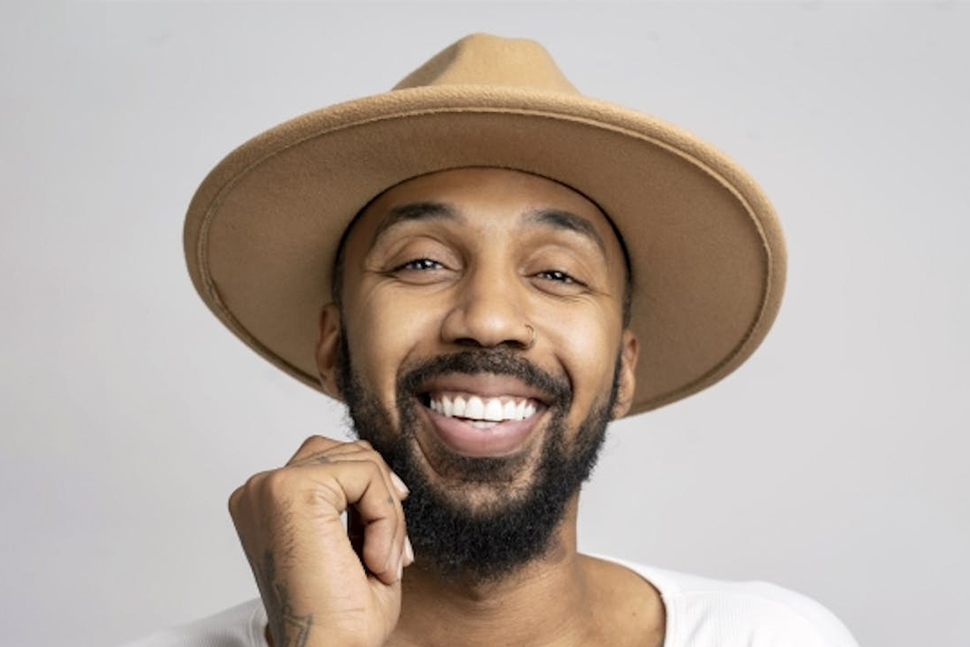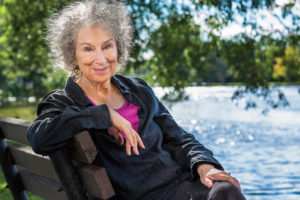
In their bestselling young adult memoir, All Boys Aren’t Blue (Farrar, Straus and Giroux, 2020), author and activist George M. Johnson tells the story of their life growing up Black and queer in the United States, while also addressing topics like racism, gender identity, toxic masculinity, brotherhood, family, and sexual abuse. The book has been frequently challenged since its release and was included in the American Library Association’s (ALA) Top 10 Most Challenged Books of 2021.
Johnson, who is serving as honorary chair of Banned Books Week this year, spoke with American Libraries about their book, why it’s being challenged, and how it can serve as a call to action.
All Boys Aren’t Blue has been challenged and banned in many schools across the US and has appeared on ALA’s Top 10 Most Challenged Books list. What is it about the book—and many others like it—that causes such opposition and fear?
Realistically, I think my book just tells the truth about the existence of Black queer people—what it feels like to grow up and live at those intersections. It gives a very raw account of that truth. In this country, many people have always been afraid of hearing the truth said so plainly and so boldly. There’s this thing in this country called “alternative history,” as well as spinning the truth or spinning the story. And this book does not spin the story. It says it, and it makes it very plain.
The book also is for teen readers, specifically 14-to-18-year-olds. So many people feel that certain topics are too heavy for teens, even though we all know that teens are already experiencing many things that I discuss in the book. People just have this fear of giving the next generation of people who will run this country the actual truth of this country, because they may actually try to change it and fix it. They may actually have empathy toward people who are nonheterosexual, empathy for people who are nonwhite. As we have seen with many in the Gen Z movement, they are very determined, they have a lot of agency, and they’re very protective of the diversity of their generation. My book gives them a road map, and there is a real fear of giving teens an actual road map rather than having them walk this world aimlessly.
Your book is more than just your life story; you’ve called it “a memoir-manifesto.” You include statistics and facts about human sexuality, American history, and more. What made you decide to dub it a manifesto and include that information?
The book isn’t just me telling my story and leaving it there. I tell my story, but I give action steps on how we can change things, how we can fix things. It gives the truth about how many of us are conditioned through a white lens and patriarchy. We’re conditioned to be homophobic; conditioned to be misogynistic; conditioned to be transphobic. My book is a call to action against all those things.
I call it a manifesto because I felt like I was putting something special and powerful into the world that was going to affect people and culture in a large way. And in watching what’s happening with the book, I think we hit the nail on the head with it.
As much as we’re seeing people against the book, we are also seeing so many people inspired by it, so many people healed by it, and so many people using it as their charge to action. So, yeah, I think my story is just a story. It’s a story that always existed, and in many ways, I just have been allowed to tell it. But in telling my story, I’m telling the story of my ancestors who never got to tell it and allowing space for future generations to tell their story. It’s an inspirational thing that is pushing people to tell their own narratives.
You write in the book and have said in interviews that you expected some controversy and pushback about All Boys Aren’t Blue and some of its content. Can you elaborate on that?
I’ve lived in this country long enough to know what they’re going to accept, what the powers that be are going to accept, and what they’re going to try to deny. We are already living in a country where they are trying to have us not talk about slavery in schools. I knew that talking about the Founding Fathers and about presidents and their ownership of slaves and being critical of race—and about what it feels like when you’re going through spaces of whiteness as a Black person and also as a queer person—that it was not going to be well accepted by everyone. [Some] think that those stories shouldn’t be told and that we shouldn’t tell stories that, quote unquote, “make white kids feel bad.”
As the oppression-class people, we have always been made to feel bad. We have always been made to feel less than. We have always been made to feel like second class citizens. How on earth is us telling our truth now making you all feel bad? I knew that, because of the way that I was telling my story, that it had an extreme potential to get banned. When I was about to write the book, [Angie Thomas’s] The Hate U Give was being attacked heavily. And I was like, “Angie’s book is just mainly about, like, police brutality and justification and clearly racism, and my book touches on all of that and more on.” And my book is a nonfiction book—I’m telling a reality that has happened to me—I knew it wouldn’t stand a chance against those same people who are already trying to deny other authors some of those same storytelling devices.
What kind of feedback have you received from teens and youth who have read your book?
I hear from teens every day. I’ve been hearing from them since the book came out. For many of them, it was the first book they ever read where they felt their story was being told, or where they felt heard and seen and connected to a person in a lived experience, unlike the books that they had been reading before.
Teen readers pick up the book and are excited about it because it doesn’t hold back; it gives them the full details of the situation. And that’s really what they’re looking for. They are looking for knowledge. They are looking for, “Okay, I had this thing happen. I haven’t learned about this. Why don’t I know about this? Why am I being shielded from this?” For them, this book, in addition to many others, gives them not just a road map but helps them formulate opinions and challenge things. They’ve been the catalyst for the support of the book. It was chosen as the number one book on YALSA’s Teens’ Top Ten list in 2021. So, I’ve got the parents of these teens trying to ban a book that they have chosen overwhelmingly as their number one pick. There’s something to be said about that.
You’re the honorary chair for Banned Books Week this year. What do you hope to do or share during this week as chair?
You know, I think the main thing that we’ve been sharing is the fact that this is not an issue around parents’ rights. Nobody is saying that certain parents can’t say, “Hey, I don’t think my child should read this book.” What we’re trying to emphasize is that one parent doesn’t get to be the parent of all. Two parents don’t get to be the parents of every other child or every other teen and every other reader that needs this book. When you take a book out of a library, you’re telling those specific teens who know what’s in that book, who know that they are represented by that book, that their stories don’t matter and that their representation shouldn’t exist next to someone else’s child’s representation. That’s what we’re emphasizing this week. This is not us versus all the parents. This is a fight for those parents who want their teens to have a more diverse and robust learning and understanding of culture, race, and all those things.
Do you have a special memory of libraries, either from your past or from the present?
I was just talking about this the other day. I used to go to the library with my friends, and I remember one of the things we were super interested in was the Salem witch trials. We would go and read these books [about the trials] together. [The TV show] Charmed was out around that time, so it was just one of those cool experiences. You learned about it in the classroom, but then you go to a library and go even deeper into the different types of things around witches and warlocks and Wicca and how it was a whole religion and how people still practice it. I remember as a young reader being happy that I could go into this place and learn so much more outside of my textbook. I imagine there are a lot of other teens who feel that way.


